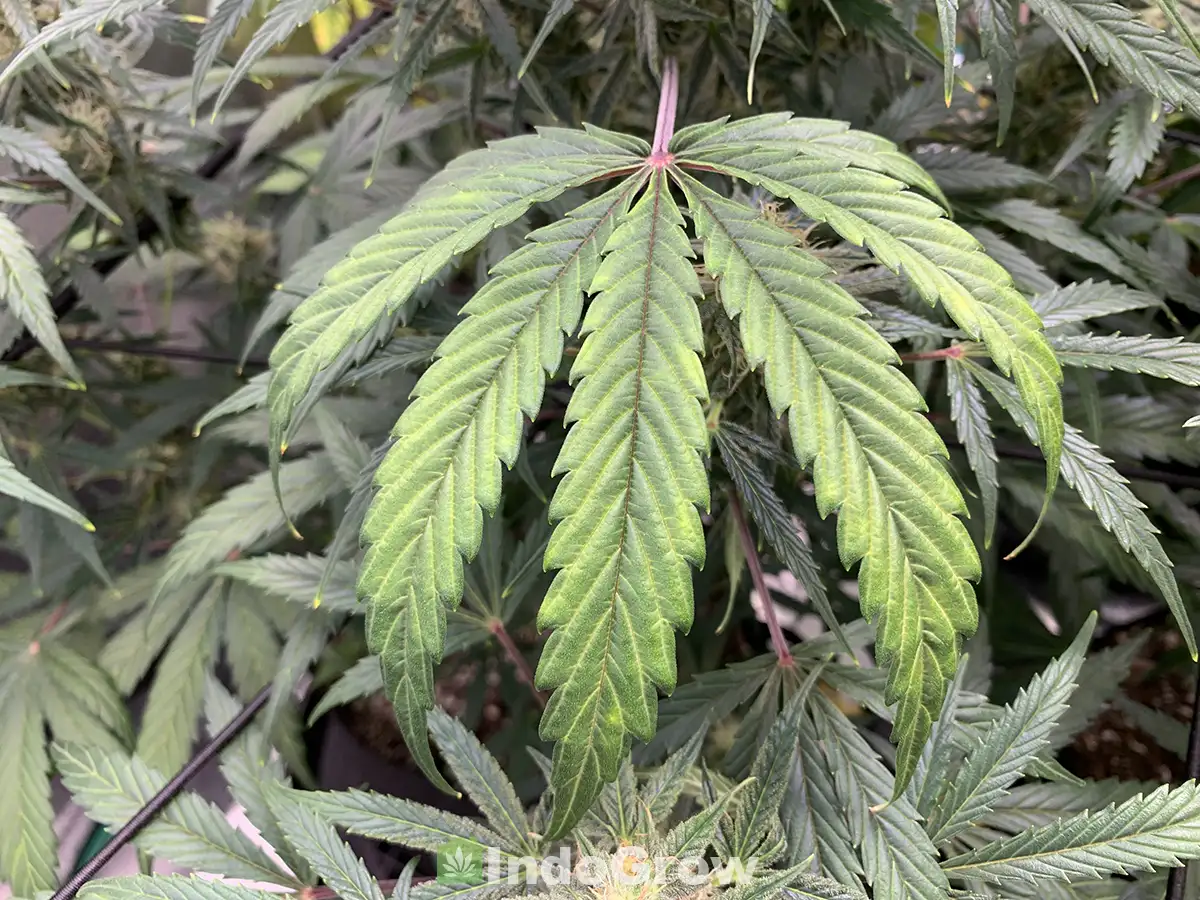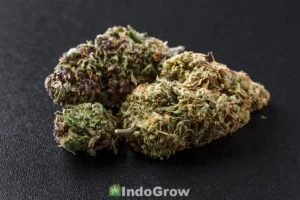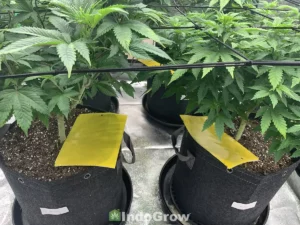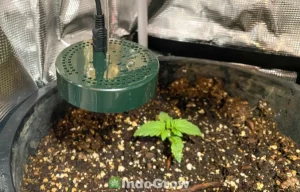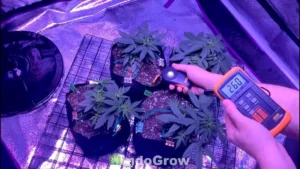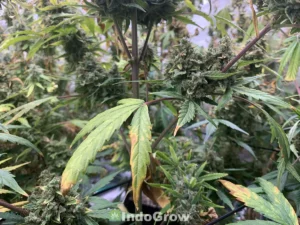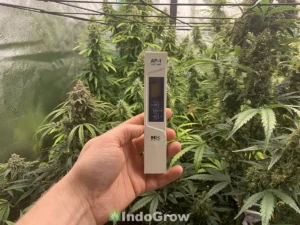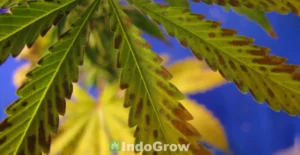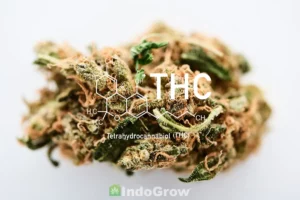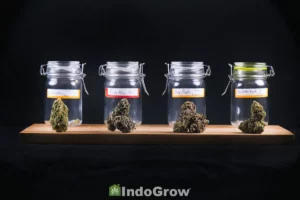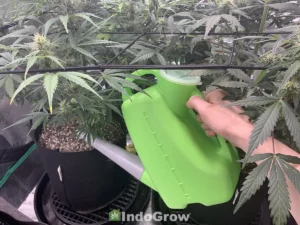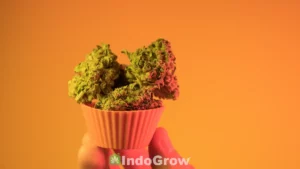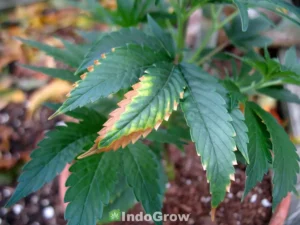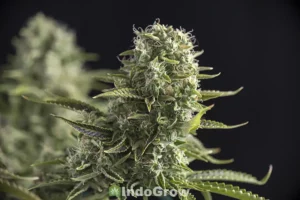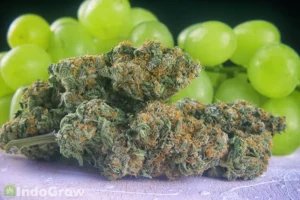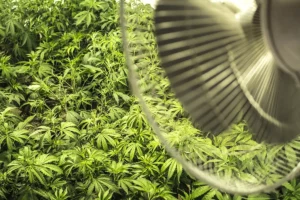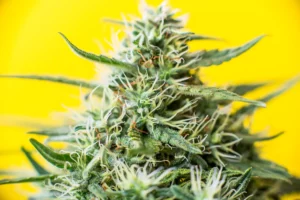Magnesium deficiency in marijuana is problematic since magnesium is an essential macronutrient used to build chlorophyll, photosynthesize, produce enzymes, and more. While most growers are aware of the importance of NPK nutrients, the importance of magnesium to healthy cannabis plants is less well known.
This article will discuss the symptoms of magnesium deficiency and toxicity, proper magnesium levels for cannabis, and how to safely add magnesium supplements to your marijuana plants.
Table of Contents
Why is Magnesium Important for Cannabis Plants?
Magnesium is a secondary micronutrient essential for cannabis growth. Cannabis plants use magnesium to produce chlorophyll, photosynthesize, build enzymes, and transport sugars and carbohydrates.
Without sufficient magnesium, plants have a reduced ability to photosynthesize and use sugars and carbohydrates they have already produced. Deficient plants become increasingly weak and stunted as time goes on. In comparison, plants with healthy magnesium levels will have faster foliage growth, more robust root systems, and larger, more potent buds.
Magnesium Deficiency Symptoms in Marijuana
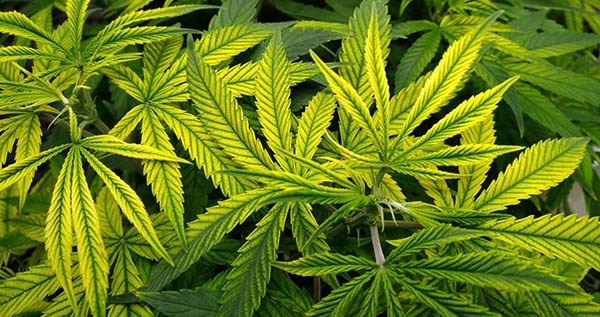
Magnesium deficiency in marijuana can cause a wide variety of physical symptoms in marijuana plants, including yellowing and eventual necrosis of the lower leaves, slowed or stunted growth, smaller bud size, and smaller root mass. Different symptoms can appear depending on the life stage of the plant and the severity of the deficiency. Leaves often appear yellow between the veins while the veins remain dark green. This is often calling “striping.” The next two headings will discuss the differences in symptoms between plants in the vegetative and flowering stages.
Vegetative Symptoms of Magnesium Deficiency in Marijuana
The early stages of magnesium deficiency in vegetative plants often appear as a yellowing of the lower leaves that progresses from the leaf margins to the leaf veins over time. As the deficiency progresses, the lower leaves will develop brown spots of necrosis, and yellowing will spread to leaves higher up on the plant. Magnesium deficient plants will also grow more slowly and have smaller root masses compared to healthy plants.
Symptoms of magnesium deficiency in vegetative plants are relatively uncommon, but treating them promptly is essential since long term magnesium deficiency in marijuana will negatively impact the size and potency of your future harvest.
Flowering Symptoms of Magnesium Deficiency in Marijuana
The flowering stage is the most common time for symptoms of magnesium deficiency to appear. Because Magnesium is a mobile nutrient, deficient weed plants will begin pulling this nutrient out of their lower leaves to supply their buds. This can cause the symptoms mentioned above to worsen or appear for the first time.
In addition to yellowing and necrosis in the leaves, the cannabis plant’s buds will be negatively affected by magnesium deficiency. If the plant cannot move enough magnesium into its flowers, it will ultimately produce much smaller, less flavorful, and less potent buds.
How Much Magnesium to Give Cannabis Plants?
A recent study from NCSU studied the impact of different concentrations of magnesium on Cannabis Sativa plants. They found that Magnesium concentrations between 50 to 75 ppm optimized plant height, diameter, and dry weight of both buds and hemp at harvest. If you feed your plants single nutrients instead of using pre mixed nutrient solutions, you should be able to measure the concentration of magnesium in water using a ppm/ec meter.
While this study has important implications for large scale cannabis producers, it is not feasible for most home growers to measure the exact amount of magnesium their plants are receiving, since they typically feed magnesium as part of a general fertilizer.
If your current nutrient solution is not providing enough magnesium, you may want to consider adding a CalMag supplement to your feeding schedule. Nutrient supplements with both calcium and magnesium are the safest choice for home growers, as an imbalance in the ratio of calcium to magnesium can have negative health effects on your plants.
What is the Proper Calcium to Magnesium Ratio for Cannabis Plants?
Calcium and magnesium are two nutrients that can cause “nutrient lockout” of one another, meaning that excessive calcium blocks magnesium uptake, and excessive magnesium blocks calcium uptake. For this reason, many nutritional supplements offer calcium and magnesium in the same solution, sometimes paired with additional nutrients such as iron or sulfur.
While exact ratios may vary product to product, calcium should always be present in a larger quantity than magnesium. Products with a Calcium to Magnesium ratio between 3:1 to 5:1 should be suitable for cannabis.
How to Fix Magnesium Deficiency in Cannabis Plants
The most common cause of Magnesium deficiency in marijuana is not actually a lack of magnesium, but a pH imbalance in your soil. Ideal soil pH for cannabis is between 5.8-6.2, with pH values below 5.5 severely limiting the amount of magnesium a plant is able to absorb from the soil.
If you suspect a magnesium deficiency, a good first step is to test the pH of your plant’s runoff water. If it is too high or two low, flush the soil. Alternatively, the natural additive dolomite lime can be used to both raise soil pH and add magnesium and calcium.
If your pH values are within healthy range and your plants are still showing signs of magnesium deficiency, begin increasing both magnesium and calcium with a supplement such as CaliMagic or Botanicare Cal-Mag Plus. Products such as dolomite lime and even epsom salt can also be used to increase magnesium.
Another important consideration is whether or not you are using coco coir. Unlike many other inert mediums used for hydroponics, coco coir contains cations that can bind to calcium and magnesium and render them unusable to the plant. Because of this, coco coir mediums should be pre treated with a cal-mag supplement before use, and you should continue to feed cal-mag supplements throughout the life of the plant to prevent a deficiency.
CaliMagic
CaliMagic is a 1-0-0 nutritional supplement produced by General Hydroponics. It contains 5% calcium carbonate, 1.5% magnesium nitrate, and 0.1% iron by volume. This product should be used as a supplement alongside an NPK fertilizer, not as your main fertilizer.
Cal-Mag Plus
Cal-Mag Plus is a 2-0-0 nutritional supplement produced by Botanicare. It contains 3.2% calcium, 1.2% magnesium, and 0.1% iron by volume. Similar to Calimagic, this product is intended only as a supplement to your main NPK fertilizer.
Epsom Salt
Epsom salt, composed primarily of magnesium sulfate, is a good source of both magnesium and sulfur for cannabis plants. It has the added benefit of being readily available around the house or at the grocery store. To use, just add one or two tablespoons of epsom salt to a gallon of water and dissolve.
When using epsom salt to raise magnesium levels, it is essential to also add a calcium supplement such as egg shells or bone meal to keep the ratio of these two nutrients balanced.
Dolomite Lime
Dolomite lime/ dolomitic lime is the best magnesium supplement for organic growers. This natural mineral product contains both calcium carbonate and magnesium carbonate, so you can use this product as a natural cal-mag supplement. Unlike liquid nutrients, lime releases into the soil more slowly, so it doesn’t need to be applied as often.
Magnesium Toxicity in Cannabis Plants
Magnesium toxicity in cannabis is uncommon, and usually occurs from overfertilization. Symptoms can include dark green or browning leaves, and leaf tips curling upwards. Excessive magnesium may also cause calcium lockout and create a calcium deficiency in the plant.
If you suspect your plant is suffering from magnesium toxicity, first flush the soil with pure water to remove built up mineral salts. In the future, reduce the concentration or frequency of magnesium fertilizers.
Summary
Proper magnesium levels are essential to a cannabis plant’s health and vitality, especially as they enter the flowering stage. Symptoms such as yellowing and necrosis of the lower leaves, slowed growth, and decreased bud size may indicate that your plants are magnesium deficient.
The most common cause of magnesium deficiency in marijuana is low soil pH. If your soil has a pH of 5.8 and above, other causes might include using coco coir or lack of magnesium in your current fertilizer blend.
Magnesium deficient plants will benefit from the use of a combined calcium and magnesium supplement such as Calimagic, Cal-Mag Plus, or dolomitic lime. Magnesium and calcium should always be fed together, as imbalanced magnesium levels can lead to calcium lockout.
With proper use of pH testing and cal-mag supplements, your plants will have enough magnesium to grow larger and produce a greater volume and quality of buds.

Rocky Horton
Author
Rocky Horton is an experienced cannabis grower and the founder of IndoGrow. The IndoGrow editorial team has over four decades of combined growing experience. Learn more.

